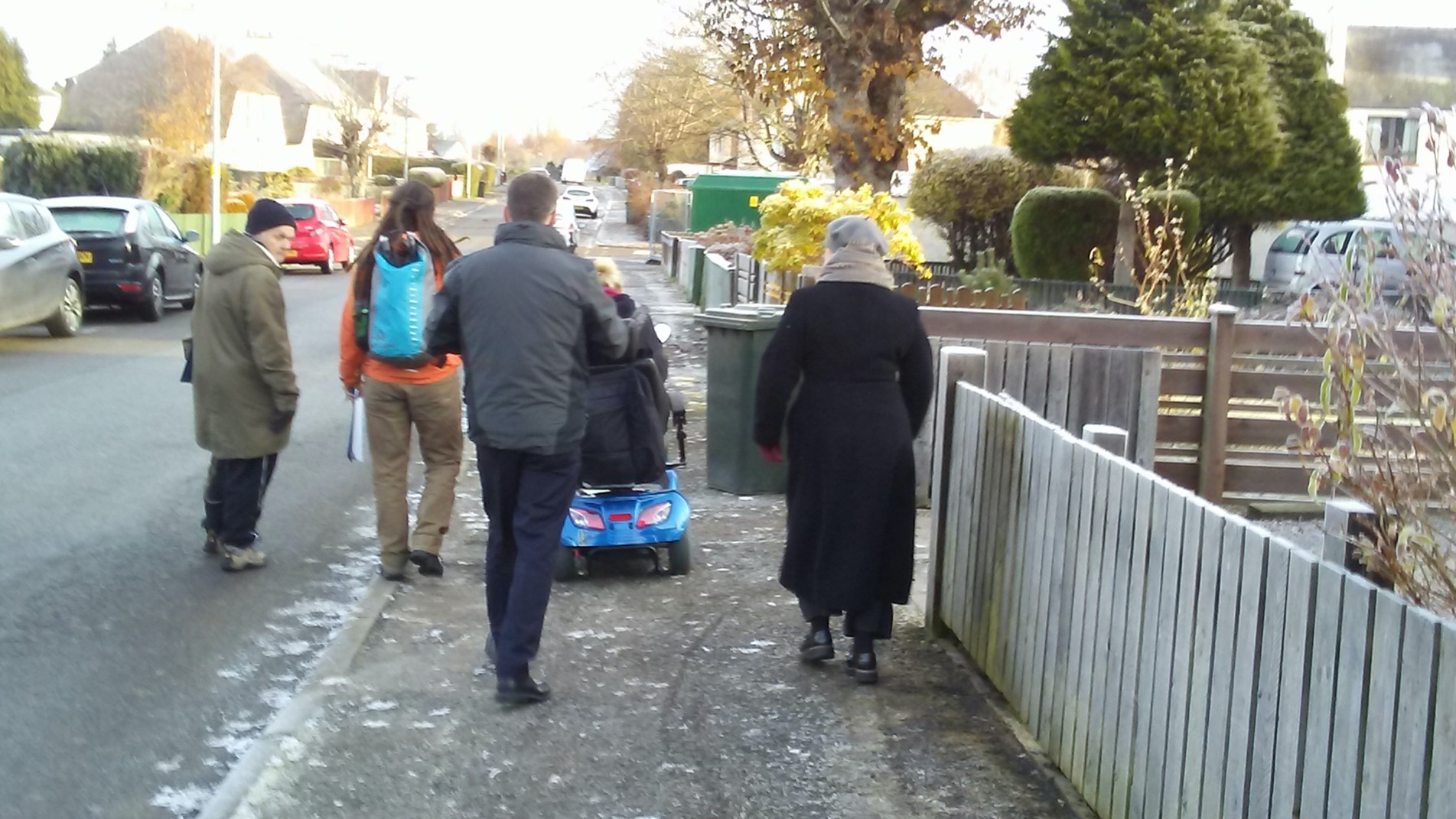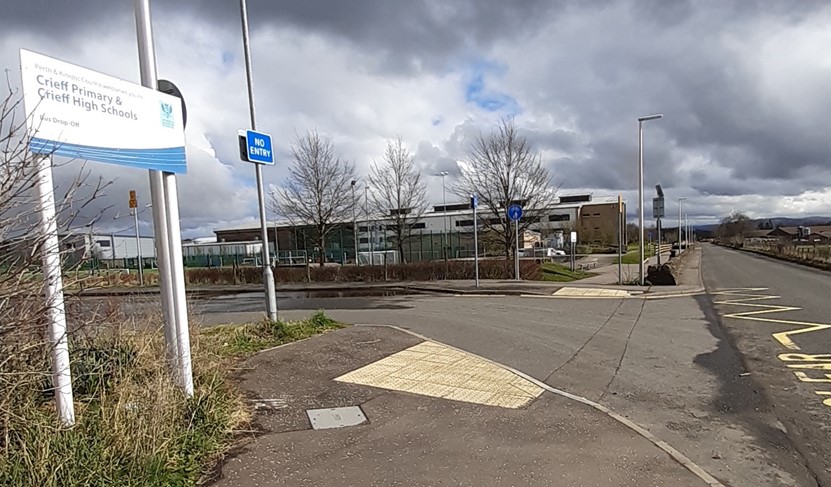Key Evaluation Findings
The evaluation includes 16 projects with a total of 22 community street audit and school route audits (CSA/SRAs) conducted between 2014 and 2019. The audits were conducted in thirteen local authorities across Scotland in a representative range of settlement types and Scottish Index of Multiple Deprivation (SIMD) areas.
The CSA/SRAs identified high amenity walking routes linking schools, high streets, community centres and transport hubs. The median route length was 1.3 km. Most audits (88%) included additional engagement activities. The CSA/SRAs had a strong inclusion focus with 94% of audit walkabouts including children, Disabled people, older people and/or their representatives.

Each CSA/SRA identified a median of thirty-eight recommendations to improve the audit route. The most frequently identified community recommendations were footway repairs (20%), drop kerb and tactiles (13%) and footway improvements such as footway widening or new footways (8%). Crossings, including signalised crossings, informal crossings such as zebra crossings and traffic islands, and continuous footways at side junctions are also important (11%). Broadly, the recommendations identified are minor measures and fall across multiple services.
The impact of the CSA/SRAs on delivery was low. Less than 5% of the total of 732 community identified recommendations are estimated delivered. Only four from sixteen CSA/SRAs resulted in recommendations such as drop kerbs, new footways and new crossings being built. One project resulted in a dog fouling programme. An additional project contributed to the introduction of 20 mph across the village.

A flash survey conducted as part of the evaluation with original community partners found that 50% of survey respondents from settlements with delivery agreed they feel safer from cars and other vehicles compared to 28% of non-delivery locations. The survey indicates on-going demand for minor walking measures with 82% of respondents reported they would like more minor walking measures in their local community.
Most local authorities do not consider minor walking measures a strategic priority. Local authorities found it challenging to deliver the community identified recommendations as they fall across multiple services. Many view key asks, such as footway repairs and drop kerbs as maintenance issues and difficult to action. The local authorities who have delivered minor measures, such as drop kerbs, treat these as changes that facilitate active travel which makes the projects fundable. Despite the increases in active travel funding since 2019, local authority partners identified a need for a dedicated 'walking minor measures and maintenance fund' tailored to enable the delivery of small schemes that make a significant local impact.
Local authority partners value the CSA/SRA process for the community engagement, the focus on inclusion which changed officers’ understanding, and the independent viewpoint. They think that the experiential way of engaging with the community on the audit walkabout has increased officers' understanding of the experiences of Disabled people, older people and children:
The process was very helpful, and actually gave us and the community a starting point to do some of the work."
It was good in that way too, just realising how difficult it can be for some residents to do what you take for granted."
Opportunities to identify larger-scale interventions were missed. One CSA/SRA identified innovation opportunities, such as continuous footways. In three projects a walking flagship approach, such as full pedestrianisation or total footway rebuild, may be more cost-effective and impactful than the minor measures proposed.
Local authority partners expressed a desire for more multi-year partnership working with Living Streets. They would like to start the collaboration earlier: from selecting the audit location and timing, making the case for prioritisation to a multi-year follow-up after the audits to support collaboration across service departments and increase delivery success. One local authority, which delivered minor measures, felt the project's success had given the roads team confidence in the value of minor walking measures and inspired demand in other communities:
If these aren’t being followed up there is a risk that they might slowly fall down the pile."
From our team’s perspective, this project has bred probably bigger willingness to look at stuff like this more."